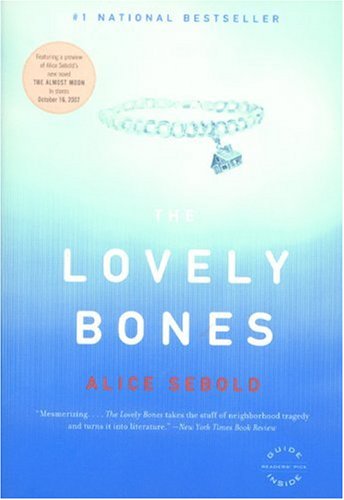All Nonfiction
- Bullying
- Books
- Academic
- Author Interviews
- Celebrity interviews
- College Articles
- College Essays
- Educator of the Year
- Heroes
- Interviews
- Memoir
- Personal Experience
- Sports
- Travel & Culture
All Opinions
- Bullying
- Current Events / Politics
- Discrimination
- Drugs / Alcohol / Smoking
- Entertainment / Celebrities
- Environment
- Love / Relationships
- Movies / Music / TV
- Pop Culture / Trends
- School / College
- Social Issues / Civics
- Spirituality / Religion
- Sports / Hobbies
All Hot Topics
- Bullying
- Community Service
- Environment
- Health
- Letters to the Editor
- Pride & Prejudice
- What Matters
- Back
Summer Guide
- Program Links
- Program Reviews
- Back
College Guide
- College Links
- College Reviews
- College Essays
- College Articles
- Back
The Lovely Bones by Elizabeth Biru
THE LOVELY BONES
The Lovely Bones is a wonderful novel that incorporates such a juicy plot with a well-written style that I must recommend it to all readers. The author uses an intriguing story line, beginning with the rape of Susie Salmon, the main character of the novel, to draw the reader in. As the story develops, the author gives a discreet description of Susie watching from above; her friends and family cope with her death.
The author of the novel, Alice Sebold, was viciouosly raped and beaten as a freshman attending Syracuse University. This tragic event inspired her to write this novel and other pieces of work. Her earlier book, Lucky, was a detailed memoir of her own rape. Using her words to vent her anguish, Sebold was able to create a wonderful work with vivid imagery and many well-used figurative techniques. With her later novel, The Lovely Bones, Sebold develops a story based on the rape of a fourteen-year-old girl. Sebold was awarded the Bram Stoker Award for First Novel in 2002 and later received American Booksellers Association Book of the Year Award for Adult Fiction in the year 2003.
The author uses an unusual point of view when approaching the story by narrating through a dead person. Though this draws away from the suspense of the story, it allows the reader to see all viewpoints of those alive on Earth as Susie watches over them. This point of view gives the reader a better insight of each character and how they deal with the negative aspects of life.
The Lovely Bones is truly a one of a kind piece of art, allowing readers from all audiences to relate to this rather common theme of life. The theme of the novel conveys as the need for coping with grief, also intertwined with love and acceptance of those who have passed away. The author takes a strange approach to introduce the protagonist of the novel, by first describing her death, and then describing how she views the lives of her loved ones from heaven. Her father becomes entrapped in his grief and for the majority of the book allows it to consume him. As Susie watched in horror her father, “christened the walls and wooden chair with the news off my death and afterward stood in the guest room/den surrounded by green glass,” (46). Her sister, Lindsey, focuses her sorrow into determination to be strong and as she returned to school the next day, “was armed to the teeth for any onslaught of sympathy,” (30). Her mother, Abigail, seeks refuge by pursuing an affair to try and simply forget about her family, but reality comes to haunt her no matter the emotional or physical distance she puts between her and her family. Originally she tries to avoid the truth by repeating to herself, “‘Fine All of it is fine,’”(33). In a way, Suzie’s mother depends on Len to escape her untraced guilt and worry because, “she needed Len to drive the dead daughter out,” (152).
This novel strikes me as an excellent book, because it describes the traits that nobody ever really thinks to admire. After the death of a loved one, most people pity the people who passed away and what a horrific way for them to go. Sebold makes it clear that it is much more difficult to still be living after such a tragic event. As in her own life, she wasn’t killed by her rapist, but mentally was scarred to inevitable levels. In grave detail, Sebold describes how the magical wonders of emotional support from a family play a key role in dealing with the death of a loved one. With my strong regards, I insist that this book be a “must read” to all those able to read. Not many recognize the need to cope with the harsh realities of life and this well-written story would certainly mobilize people to think differently about this aspect of life.
Similar Articles
JOIN THE DISCUSSION
This article has 0 comments.

